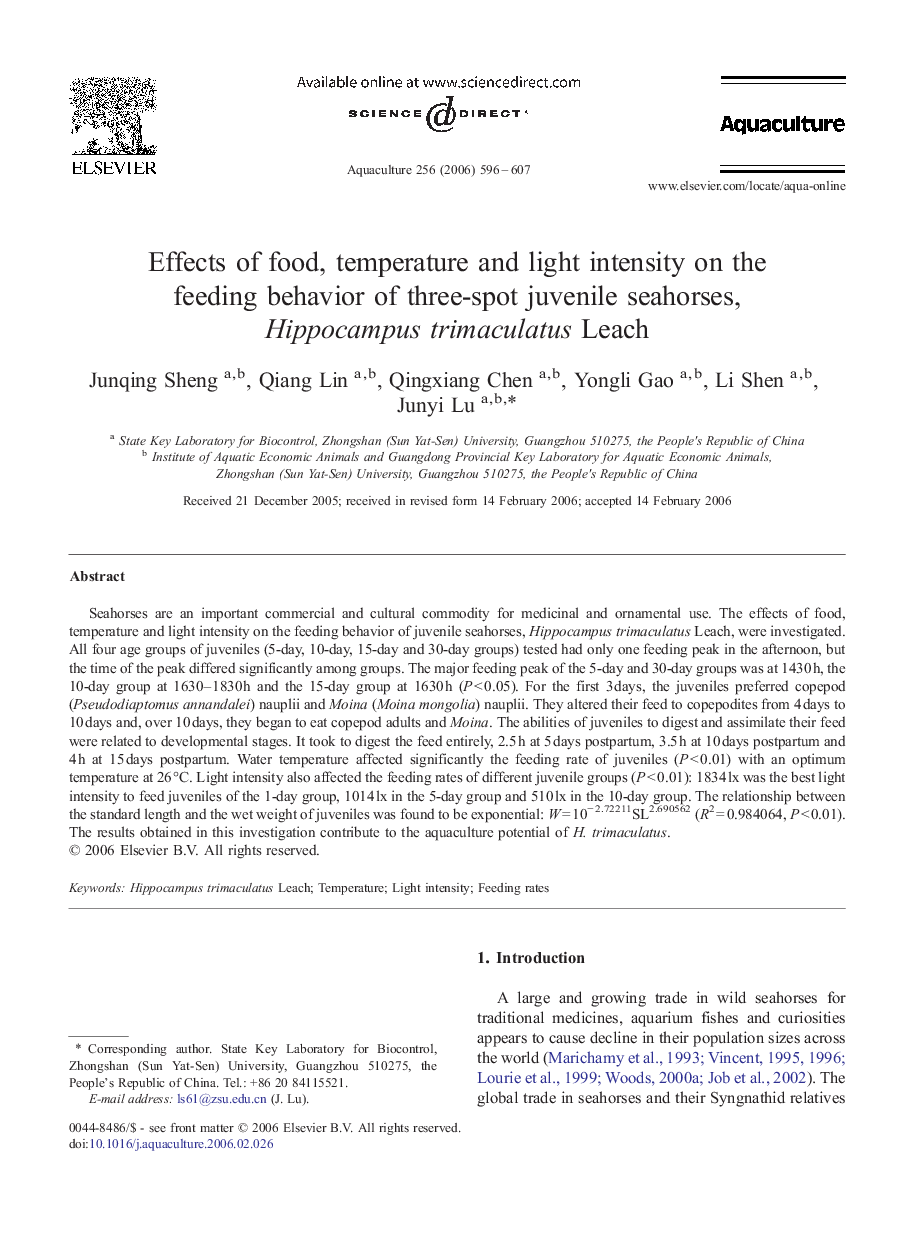| کد مقاله | کد نشریه | سال انتشار | مقاله انگلیسی | نسخه تمام متن |
|---|---|---|---|---|
| 2425960 | 1552985 | 2006 | 12 صفحه PDF | دانلود رایگان |

Seahorses are an important commercial and cultural commodity for medicinal and ornamental use. The effects of food, temperature and light intensity on the feeding behavior of juvenile seahorses, Hippocampus trimaculatus Leach, were investigated. All four age groups of juveniles (5-day, 10-day, 15-day and 30-day groups) tested had only one feeding peak in the afternoon, but the time of the peak differed significantly among groups. The major feeding peak of the 5-day and 30-day groups was at 1430 h, the 10-day group at 1630–1830 h and the 15-day group at 1630 h (P < 0.05). For the first 3 days, the juveniles preferred copepod (Pseudodiaptomus annandalei) nauplii and Moina (Moina mongolia) nauplii. They altered their feed to copepodites from 4 days to 10 days and, over 10 days, they began to eat copepod adults and Moina. The abilities of juveniles to digest and assimilate their feed were related to developmental stages. It took to digest the feed entirely, 2.5 h at 5 days postpartum, 3.5 h at 10 days postpartum and 4 h at 15 days postpartum. Water temperature affected significantly the feeding rate of juveniles (P < 0.01) with an optimum temperature at 26 °C. Light intensity also affected the feeding rates of different juvenile groups (P < 0.01): 1834 lx was the best light intensity to feed juveniles of the 1-day group, 1014 lx in the 5-day group and 510 lx in the 10-day group. The relationship between the standard length and the wet weight of juveniles was found to be exponential: W = 10− 2.72211SL2.690562 (R2 = 0.984064, P < 0.01). The results obtained in this investigation contribute to the aquaculture potential of H. trimaculatus.
Journal: Aquaculture - Volume 256, Issues 1–4, 15 June 2006, Pages 596–607